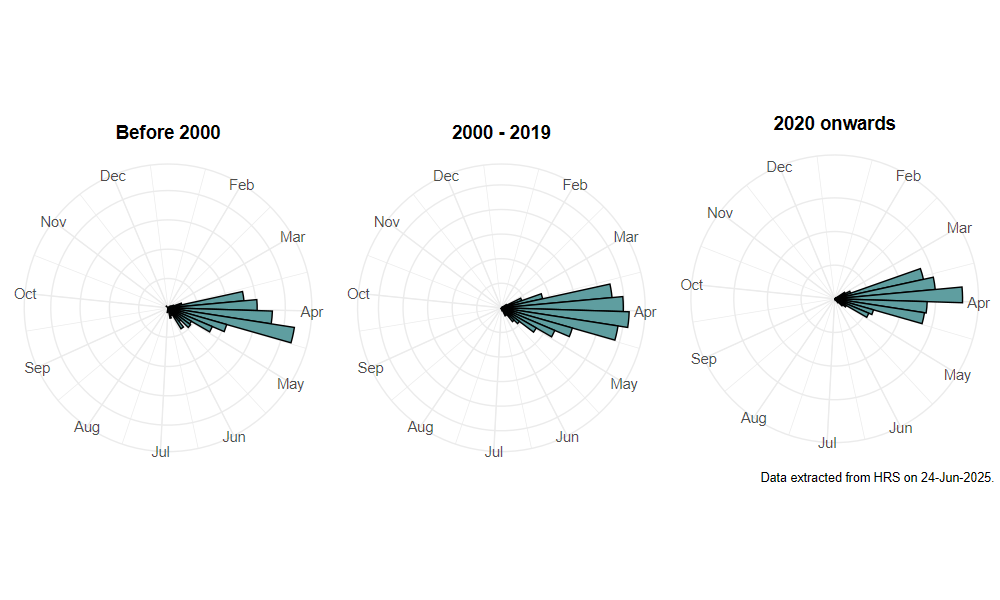Criorhina ranunculi (Panzer, 1804)
Identification
Identification difficulty = 2. ![]()
![]() according to Ball & Morris, 20241
according to Ball & Morris, 20241
Biology
The larva has been found in wet decaying roots of Aspen Populus, Beech Fagus sylvatica, Birch Betula sp. and Sycamore Acer pseudoplatanus. Whilst large, old deciduous trees in woodland are probably the normal breeding habitat, females have been seen inspecting the bases of birch trees in heathland. Adults fly early in the spring and are usually seen visiting the blossom of early-flowering shrubs such as Goat Willow Salix caprea, Blackthorn Prunus spinosa, and occasionally Hawthorn Crataegus sp., or basking on sun-lit foliage. Males fly with a characteristic high-pitched whine. They are often seen visiting flowers rather high up on such bushes and, in consequence, binoculars are useful when trying to pick them out amongst queen bumblebees.
Flight period
The following plots show the number of unique records per week excluding those reported to be of immature stages.

Status
Was listed as 'Notable' by Falk, 19912, but dropped from this status by Ball & Morris, 20143 who consider it LOWER RISK.
Distribution
Although this species is mainly known from counties south of Cumbria, recent recording has shown that it is probably much more widely distributed and that it occurs in some largely coniferised areas in northern England. There are scattered records north to Sutherland with a small hot spot in Strathspey. It seems likely that this species is under-recorded because it flies early in the year and is best sought using a long net handle (telescopic landing net handle). It has been recorded more frequently since 2000 and there is some evidence for a northward expansion of its range, but it may be because more people are looking for this rather photogenic species.

Trends
The following plots show the Frescalo TFactor vs year and a map of the rescaled frequency (all records) for the species.
-
Ball, S., & Morris, R. (2024). Hoverflies of Britain and Ireland. WILDGuides (3rd ed.). Oxford: Princeton University Press. ↩
-
Falk, S. (1991). A review of the scarce and threatened flies of Great Britain. ( No. 39). Research and Survey in Nature Conservation (pp. 1–194). Peterborough: NCC. ↩
-
Ball, S., & Morris, R. (2014). A review of the scarce and threatened flies of Great Britain. Part 6: Syrphidae. ( No. 9). Species status (pp. 1–130). Peterborough: JNCC. ↩